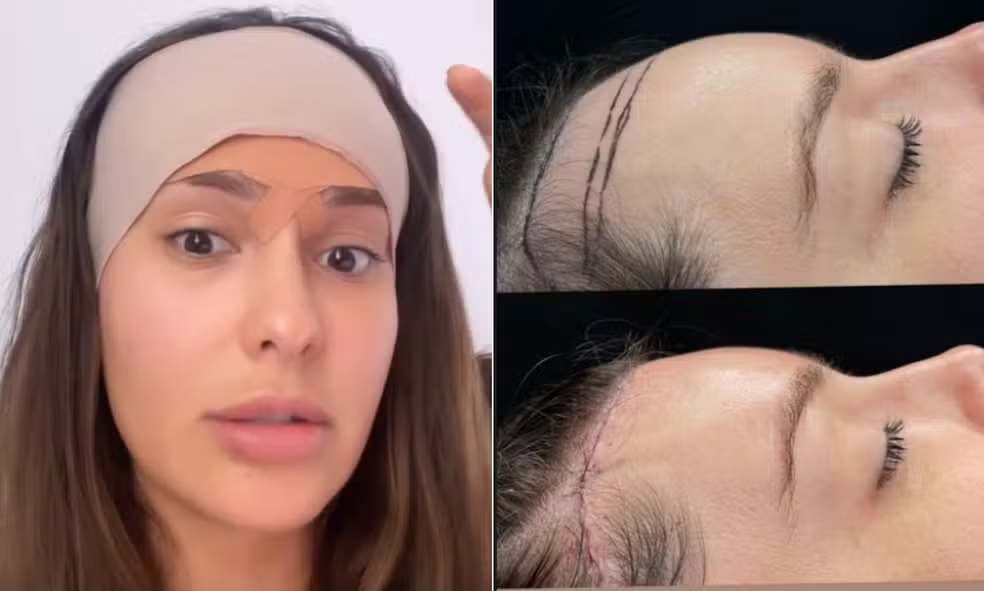Forehead Height Reduction: Why Hair Transplant Is the Best Option
Many people seek aesthetic procedures to reduce forehead height, aiming for better facial harmony and a more balanced appearance. However, not all available methods are safe or free of side effects. One of the most important considerations before opting for traditional surgery is the risk of sensory changes in the scalp and forehead region.
Understanding the Risks of Forehead Reduction Surgery
When performing surgery on the forehead to reduce its height, it is crucial to remember that important sensory nerves run from the eyebrows to the scalp. These nerves are responsible for sensation across the forehead and along the hairline.
In procedures that involve incisions along the hairline or posterior scalp, these nerves can be:
- Inflamed due to surgical trauma;
- Temporarily damaged from tissue manipulation;
- Or, in severe cases, severed entirely.
When these nerves are affected, patients may experience prolonged sensory changes, such as tingling, numbness, or tightness in the forehead and scalp. In cases of permanent nerve injury, these sensations can last indefinitely, significantly impacting quality of life.
Minimally Invasive Surgeries Still Carry Sensory Risks
Even modern minimally invasive procedures, such as endoscopic forehead lifts, which use small portals to lift underlying structures, can cause temporary sensory changes. These are usually due to surgical edema and tissue manipulation. While these sensations are typically temporary, they can still cause discomfort during the recovery period.
Because of this, any aesthetic surgery involving pre-hairline or intracapillary incisions should be approached with caution. Beyond the risk of visible scarring, patients may face long-lasting and pronounced sensory alterations, which can affect daily comfort and satisfaction.
Hair Transplant: A Safe Alternative
For patients who want a reduction in forehead height for cosmetic purposes, hair transplantation is the safest and most effective option. This procedure allows the hairline to be advanced by up to 2 cm, achieving the desired effect of a lower forehead without visible scars and without risking long-term sensory changes.
During a hair transplant, hair follicles are harvested from donor areas and implanted along the frontal hairline, creating a natural, long-lasting result. Because the procedure does not involve large incisions or deep manipulation of sensory nerves, the risks are significantly lower than with traditional forehead reduction surgeries.
Benefits of Hair Transplant for Forehead Reduction
- Preserves Sensation: Nerves are not cut, preventing long-lasting numbness or tingling.
- Natural Results: Individual hair follicles are placed carefully, creating a harmonious and discreet hairline.
- No Visible Scars: No large cuts mean no permanent marks.
- Faster Recovery: Minimal surgical trauma leads to less swelling and discomfort.
- Significant Forehead Height Reduction: Hairline can be lowered up to 2 cm safely and precisely.
Key Considerations
Patients seeking forehead reduction for aesthetic reasons must carefully weigh the risks and benefits of each approach. Traditional surgeries with pre-hairline or intracapillary incisions may achieve cosmetic results, but they often carry the risk of long-term sensory changes, along with visible scarring.
In contrast, hair transplantation offers a modern, safe, and effective alternative. It combines aesthetic improvement, preserved sensation, and absence of scars, giving patients the best of both worlds: a lower forehead with natural-looking results.
Conclusion
For anyone considering forehead height reduction, hair transplantation is the superior choice. It allows for a safe, effective, and minimally invasive solution that avoids the complications associated with traditional incisions. Patients achieve a lower hairline, natural aesthetic outcomes, and maintain full scalp sensation — all without leaving visible scars.
If you’re thinking about reducing your forehead height, schedule a specialized consultation to discuss your goals and determine the best approach for a natural and safe result.






